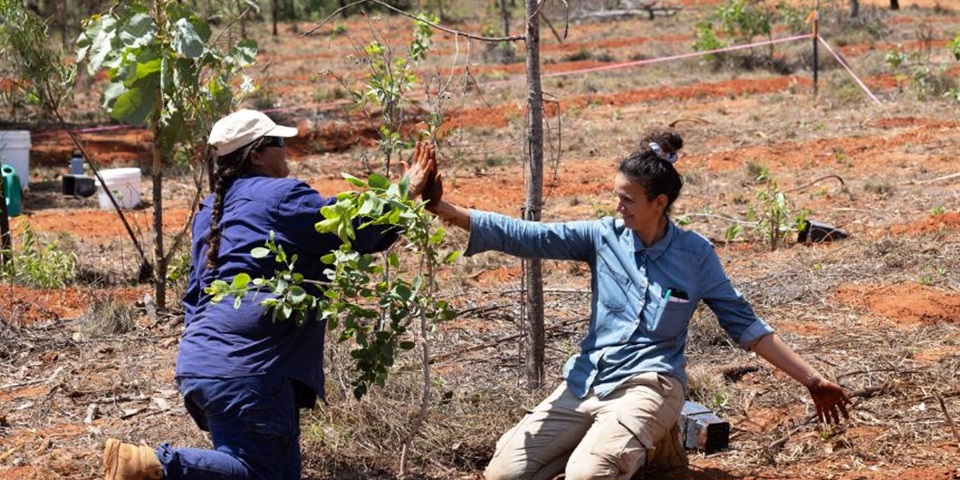Research securing our future
As the first university in Western Australia to become a signatory to the United Nations' Sustainable Development Goals, we have a long standing and deep commitment to delivering research that helps secure the future of the world around us.
Our community is home to global experts in forest ecology, fire management, marine ecosystems and environmental engineering, all of which are pursuing the most pressing environmental challenges of our time.
We use our biodiverse campus as a living laboratory to help drive positive change and welcome everyone to join this journey and learn more about the critical research taking place here.
How bush tucker is helping restore ecosystems

New research suggests that bush tucker could contribute to restoring ecosystems around Australia, while providing on-Country employment opportunities for Indigenous communities.
Despite Indigenous Knowledge being fundamental to land stewardship, only two per cent of profits from the sector are currently being held by First Nations peoples.
Murdoch University PhD candidate Sara Cavalcanti Marques sought to address this in her research, partnering with Traditional Landowners and North Regional TAFE to develop a training program to implement bush tucker cultivation in Broome.
The project was a two-pronged approach, with the planting thought to have positive environmental impacts while addressing a rapidly growing demand for Australian native bush foods and medicines.
Ms Cavalcanti Marques assessed the Savannah Enrichment model emerging in the Kimberley.
This is a novel horticultural concept, developed by Kim Courtenay from North Regional TAFE, which introduces high-value native food species to degraded ecosystems in order to meet both Indigenous enterprise development goals and land stewardship duties.
While Savannah Enrichment successfully addresses native plant cultivation, it has not yet been assessed to quantify its performance as a potential tool for restoration, and in turn incentivise its implementation on a larger scale.
This study monitors existing Savannah Enrichment trials and compares these with degraded and healthy savannah reference sites to gauge the model’s performance in terms of its capacity for restoration and carbon sequestratio
Through this project, Ms Cavalcanti Marques said a key focus was tailoring a participatory framework for an accredited training program for Aboriginal Rangers.
This program allows for upskilling in the execution of research, contributing to the legacy of Rangers’ work caring for Country and fostering the continuity of the work beyond the project’s conclusion.
The chosen key species of bush tucker for the project’s Broome location was the Gubinge, also known as the Kakadu Plum. Gubinge was chosen due to its immense economic potential, as it holds the highest concentration of Vitamin C, is sought after worldwide and has cultural importance locally.
Rangers involved in the training program were from Nyangumarta, Karajarri and Bardi Jawi groups, along with Rangers from Kimberley Mineral Sands.
Ms Cavalcanti Marques said that with this research, she hoped to shed light on opportunities to diversity environmental practices to encompass a broader scope of social and ecological benefits.
By delivering key insights into the potential applications of the Savannah Enrichment model as a tool for restoration and carbon farming, she said she hoped doors would open for “much-needed” further research in the space.
The demand for Australian native bush foods and medicines is steadily expanding, and with it, the demand for sustainable models of cultivation that address the substantial gap in Indigenous leadership and participation in the sector.
